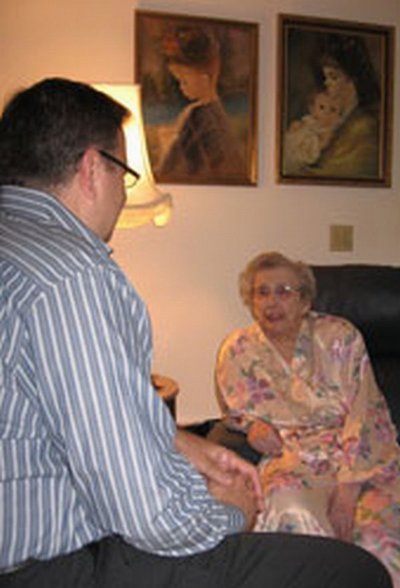August 19, 2010
UW Medicine palliative care program receives funds to care for terminally ill people lacking primary care
Even under the best of circumstances, seriously ill patients too often lack timely access to palliative care — relief from the pain and suffering associated with serious disease. Studies show that doctors often wait to talk about palliative care until the patient’s last few weeks or days of life. For vulnerable populations, like those without insurance, non-English speakers, or people without a primary-care doctor, conversations about palliative care happen even less frequently.
A new UW Medicine program based at Harborview Medical Center, however, is working to address such disparities in palliative care, armed with a $100,000 grant from The Regence Foundation, the corporate Foundation of Regence BlueShield. The goal of the Primary Palliative Care Program, which started in 2009, is to improve continuity and quality of care for terminally ill patients who lack a primary care provider. The program will use the Regence Foundation grant to measure outcomes over a two-year period and create a primary palliative care guide for health care providers across the nation.
Darrell Owens, director of the Palliative Care Service at Harborview and an attending provider, said the program puts UW Medicine “ahead of the curve in palliative care.” He and his team currently see about 60 patients, providing continuity of care and keeping patients out of the emergency room when care can be managed by a primary care provider.
“As a community, we need to do more to ensure people with serious diseases have access to palliative care,” said Michael Alexander, board chair of The Regence Foundation. “Just because a person didn’t have good continuity of care earlier in life, it doesn’t mean they shouldn’t have it when they’re facing a life-threatening disease. UW Medicine’s model of combining palliative and primary care has a lot of potential for success because it combines disease management and the reduction of pain and suffering from disease symptoms.”
Patients like Virginia Astrup, 90, are already benefitting from the program. Astrup, who lives in Seattle, was in hospice care, until she was dropped from that program because she essentially lived too long. Unable to see a primary-care provider, she became a regular at the emergency department for her heart-related ailments. Now, in this new program, Astrup lives independently at home, has regular visits with a nurse practitioner and only goes to the emergency department for a real emergency. She’s happy, and wants others to know that they can have this type of end-of-life care, too.
Primary and palliative care are combined and delivered by nurse practitioners trained in both specialties in this unique program. Patients have the option of visiting an outpatient clinic or—as in Virginia’s case—they may receive a home or nursing facility visit by nurse practitioners. Patients also have around-the-clock telephone access to a nurse practitioner. Already, the program has demonstrated promise for improving the management of patients’ pain and other symptoms, supporting patient compliance with treatment protocols, reducing the number of patient hospitalizations and emergency department visits, and strong family and caregiver satisfaction with care.

